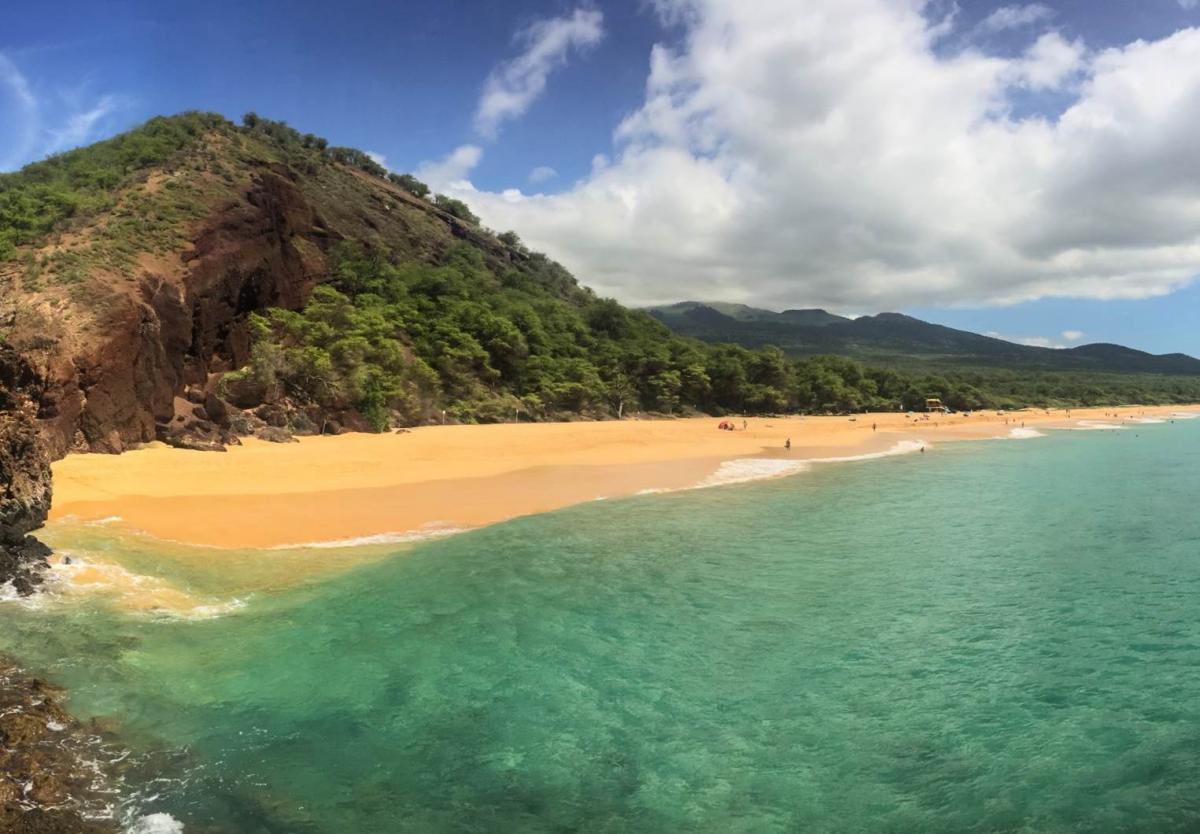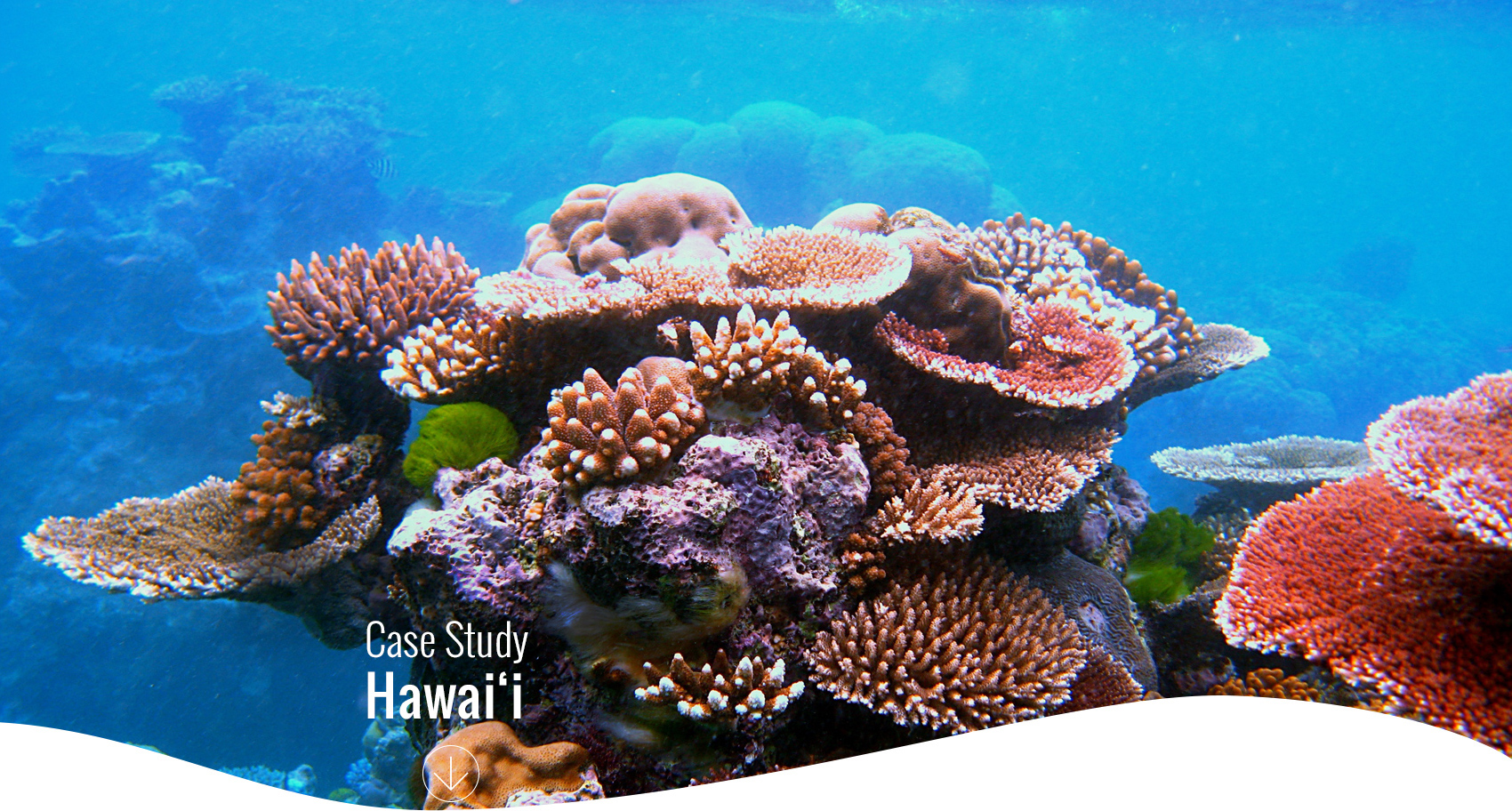Reefs of Hawaii
Like reefs elsewhere around the world, the condition of many Hawaiian reefs has declined due to interacting land- and ocean-based threats. However Hawaii sits in colder, rougher waters than most coral reefs, and its reefs are naturally more variable in coral cover, algal cover and overall reef community structure. Therefore, Hawaiian reefs may not conform to the simple view that reefs are either coral-dominated and ‘healthy’ or algal-dominated and ‘degraded’; a more nuanced view of reef tipping points may be necessary.
Leveraging one of the most extensive reef monitoring datasets ever compiled and new comprehensive maps of human and environmental drivers of reef change, our collaborative team built a novel view of Hawaiian nearshore reefs and the factors that interact to shape them. With this information, we are developing a suite of tools and analyses to support management in the face of reef change:
- Characterization of reef regimes with quantitative metrics that help to distinguish human-caused degradation from natural variation
- Leading indicators that may provide early warning that a reef is at risk of crossing an ecosystem tipping point
- Prioritization of places and stressors most in need of management action, and
- Tradeoff analysis to weigh the costs and benefits of different management options, with a first analysis focused on watershed management in West Maui.
This integrated analysis of the state of Hawaii’s reefs, co-developed with our management partners, can enhance restoration and reduce the chance of surprising, costly, and potentially irreversible changes to the ecosystem and the people who depend upon it. Our outputs are tools, maps, and guiding principles to help practitioners effectively anticipate, avoid, and respond to coral reef change in Hawai‘i and beyond.

“Tipping points to me could be a call to action, understanding that there is this point we could reach where it might be too late. Sometimes we need that as an impetus to bring everybody to the table… The community knows; they’ve seen changes, they know that things aren’t like what they used to be. [This] is a reason for us to sit at the same table and say “alright, we know this, what are we going to do now?”
-- Katie Nalasere, Education Specialist, Hawaii Division of Aquatic Resources, Kauai
